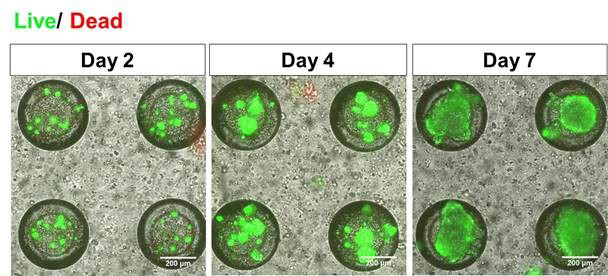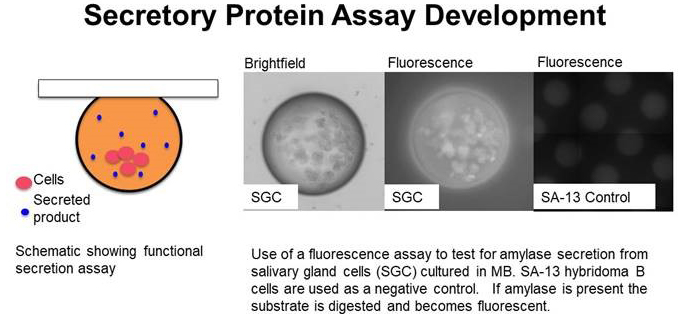Development of Functional Salivary Gland Microbubble Chip Arrays for High Throughput Drug Discovery
Project Collaborators: Drs. Catherine Ovitt, Danielle Benoit, and Paul Dunman
Xerostomia is a condition of dry mouth due to loss of salivary gland function. It can result from autoimmune disease (Sjogren’s Syndrome) or as a side effect of taking certain drugs or as an unavoidable consequence of irradiation therapy for treatment of head and neck cancers. This project seeks to discover radio protective drugs to prevent development of xerostomia using tissue chip technology. A key limitation in discovering such drugs is the lack of in vitro models to culture functional salivary gland mimetics.

Salivary gland cells growing over time in microbubble wells.
We overcome this hurdle by using microbubble (MB) array technology which is highly advantaged for development of functional tissue chips that can be used in high throughput (HT) drug discovery. This project builds on our prior work developing macro-hydrogel microenvironments for culturing salivary gland cells that promote cell survival, proliferation, and apicobasal organization. However, key secretory acinar cell markers were rapidly down regulated in macro-gel format which is also not amiable to HT discovery. Here we couple our expertise in hydrogel engineering with microbubble array technology. MBs are micron-scale spherical cavities molded in polydimethylsiloxane (PDMS). MBs have the advantage of length scales and curvatures similar to the secretory acinar unit of glands, providing a niche that promotes cell-cell contact and importantly the concentration autocrine and paracrine factors that have been shown to enhance tissue assembly. On-going studies seek to develop functional assays to test for salivary secretion from spheroid that exhibit polarized cell organization and preserved gene expression. These chips can then be used for drug testing.
